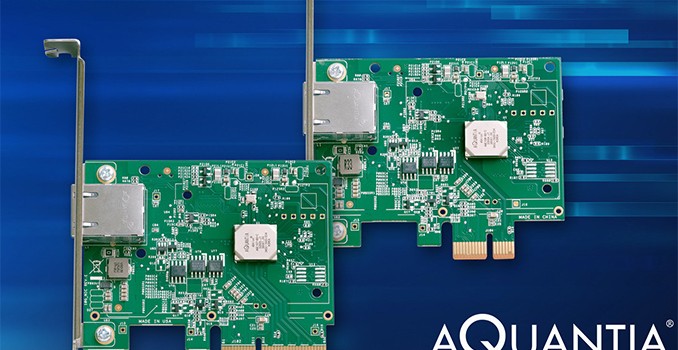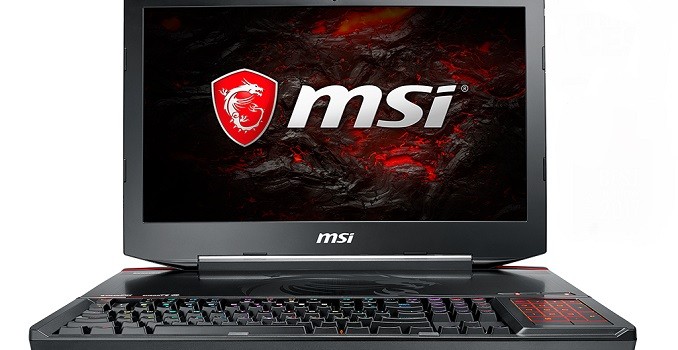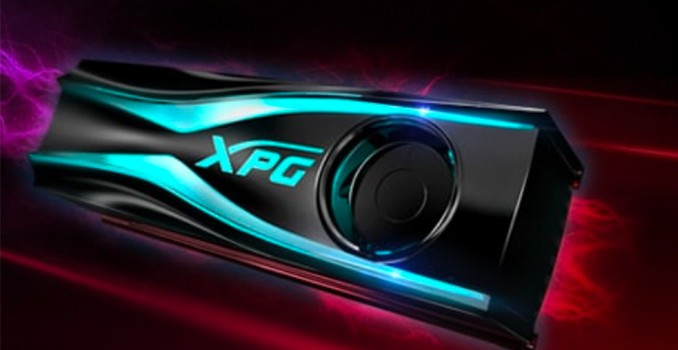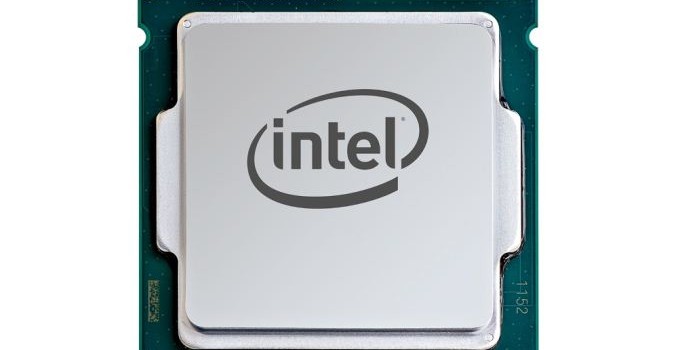
Along with our quarterly laptop guide, near the end of every year we also like to take a look at the state of the gaming laptop market. With a much more cyclical upgrade cycle, gaming laptops tend to evolve in lockstep with the major components inside them. For the gaming laptop market, this includes not only more powerful CPUs, but also more unique (for a laptop) components like discrete video cards, mechanical keyboards, and perhaps an IPS panel for better color reproduction over the cheaper VA panels. All of which come together to make a breed of laptop that is very different from the kinds of machines that define the mainstream and professional markets.
Sizing up the current state of the gaming laptop market, 8th Generation CPUs for notebooks were released a couple of months ago but haven’t made their way into the list quite yet. We expect to see many more announcement at CES. The 7th Generation parts are no slouch in 45W form and are a good match to the discrete video cards from the GeForce GTX 1050 up to SLI GTX 1080’s we will see on the list.
| Gaming Laptop Recommendations Holiday 2017 |
| Segment |
Model |
Starting Price (As of writing) |
| Low-Cost Gaming |
Lenovo Legion Y520 15.6 |
$879 USD |
| |
Dell Inspiron 15 7000 |
$1089 USD |
| Mid-range Gaming |
ASUS ROG Strix 15.6 |
$1648 USD |
| |
Razer Blade 14 |
$2099 USD |
| High-End Gaming |
MSI GT73VR Titan Pro-865 |
$2699 USD |
| |
Razer Blade Pro |
$3999 USD |
| DTR Gaming |
Mythologic Phobos 8717 |
$2335 USD |
| |
MSI GT83VR Titan SLI |
$5399 USD |
As always, we’ll break the guide down into several segments to serve various markets, from low-cost to mid-range, high end, and ultimate gaming.
Low-Cost Gaming Laptops
Lenovo Legion Y520 15.6

Kicking things off, we have entry-level gaming laptops. The Lenvov Legion Y520 was the first member of the Legion series of gaming laptops Lenovo released in early 2017. The laptops hit the scene with a 7th Generation Intel Core i7 CPU – the i7-7700HQ @ 3.8 GHz max Turbo – a 15.6-inch 1920×1080 FHD IPS Anti-glare monitor (though it can’t cover 100% sRGB), 8GB of Dual-Channel DDR4 2400 MHz RAM (supports 16GB). This specific configuration includes a 256GB PCIe SSD with additional options for up to a 2TB 5400RPM HDD.
Driving the monitor for games is a GeForce GTX 1050 Ti with 4GB of VRAM which delivers solid performance at 1080p. The keyboard is full-size with a number pad to the right side and is backlit in red only on the Y520 (Y720 has multiple colors). The chassis is made out of plastic and contains a woven pattern which gives it an attractive look without going overboard. For under $900 the Y520 packs a fairly powerful punch for a gaming laptop.
Dell Inspiron 15 7000 Series Gaming Edition 7567
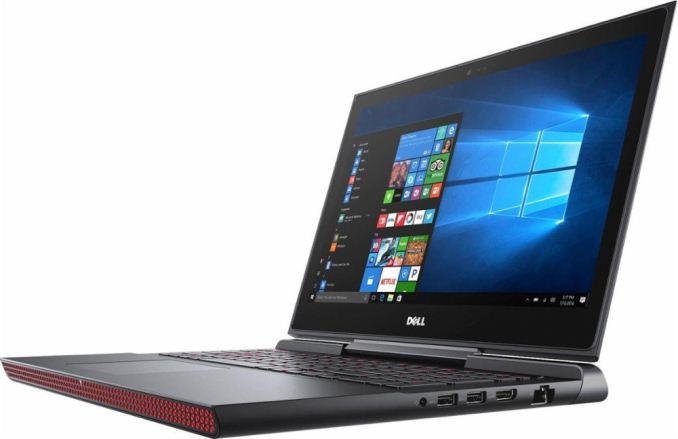
Next in the low-cost gaming segment is the Dell Inspiron 15 7000 Series Gaming Edition. The 7567 has a 15.6-inch 1920×1080 Anti-glare IPS panel driven by a NVIDIA GeForce GTX 1050 4GB, and can be upgraded to a GTX 1060. The CPU is a 7th Generation Intel Quad-core i5-7300HQ with a max turbo of 3.5 GHz and is upgradeable to the I7-7700HQ. This specific model comes with a small 128GB M.2 SSD and a 1TB 5400 RPM HDD giving users a nice balance of high-speed low capacity storage and lower speed high capacity storage. For RAM, this specific model includes 8GB of DDR4 2400 MHz (up to 16GB).
The exterior of the 7000 Series made of black plastic and uses a black and red design theme with the Dell logo in red on the back of the lid, red vents on the front for cooling, and red characters on the keyboard. Consequently it very much looks like a gaming laptop, which may not appeal to some buyers in this segment. Like the Lenovo Legion above, the design isn’t outlandish but offers enough cues it’s made for more than simply web and email. The base price is $799 at the Dell website while the specific setup here is listed at $1089 on Amazon US.
Mid-Range Gaming Laptops
ASUS ROG Strix GL502VS- DS71
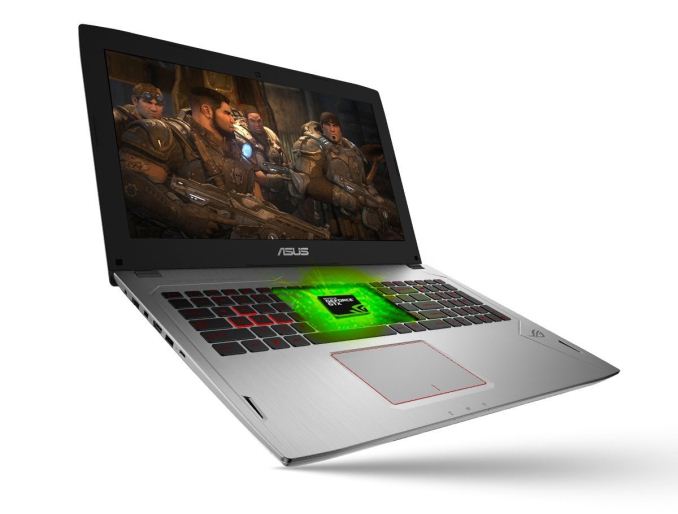
At the mid-range of the gaming laptop market, the ASUS ROG Strix Gaming laptop brings to the table a full GeForce GTX 1070 8GB GPU driving a 15.6-inch FHD 1920x1080p 120Hz G-SYNC display. This is a very common combination, and makes for plenty of horsepower to run through many the latest games at High/Ultra settings. The ROG Strix laptop uses the same 7th Generation Intel Core i7-7700HQ processor as many other gaming laptops in this guide, along with 16GB if DDR4 2400 Mhz RAM. For storage, this option includes a 1TB HDD and a small 128GB SATA based SSD.
The chassis of the Strix is made out of aluminum, has a brushed finish, and comes in a silver color. The laptop is also said not to be too heavy or cumbersome. The overall build quality, however, was just deemed OK and it tends to run warm. Its overall appearance is fairly understated with the ASUS Logo and design queues on the lid. The brushed aluminum carries over to the inside of the laptop and uses RGB LED keyboard with red print on the keys and surrounding the trackpad. The model selected is priced at $1648 at Amazon US while a GTX 1080 8GB, a larger 120 Hz G-SYNC monitor, and a larger SSD are a couple of the major options above this version.
Razer Blade 14
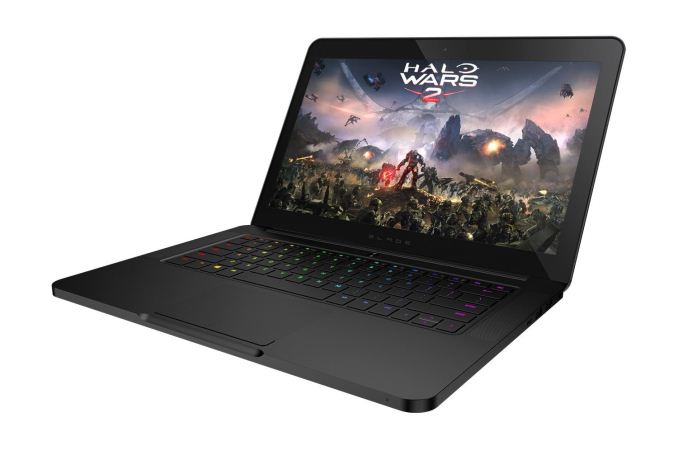
For a slightly smaller alternative, we have the Razer Blade 14. The Blade comes equipped with a 7th Generation I7-7700HQ and an NVIDIA GeForce GTX 1060 6GB driving a 14-inch 1920×1080 IGZO display, offering great performance even uncalibrated. This particular model includes a 512GB PCIe based SSD for storage with an option to use a smaller SSD and a 2TB HDD, while for RAM the laptop comes with 16GB of DDR4-2400.
The Blade’s membrane based keyboard has white lettering on the keys and individually backlit keys which can be customized through the Razer Chrome software. The chassis is made of Aluminum CNC and built very solid with the Razer symbol gracing the top of the lid and is the only real design aesthetic on the matte black laptop. Pricing on this unit comes in at $2099 and is pricey for the GTX 1060 inside.
High-End Gaming Laptops
MSI GT73VR Titan Pro-865
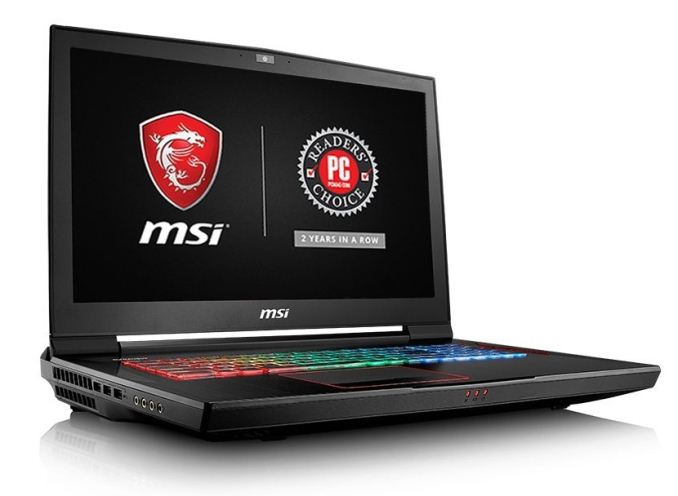
Moving up to high-end laptops, the MSI GT73VR Titan Pro is our first gaming laptop chosen which includes a GTX 1080 at our price point. It is a full GTX 1080 sporting 8GB of GDDR5X VRAM. The GeForce GTX 1080 is the fastest single GPU available for a laptop, and coupled with the default 1080p display can handle virtually anything thrown at it. This specific configuration uses the now familiar i7-7700HQ CPU, but does offer a 7820HK (2.9GHz/3.8GHz) option above that. RAM capacity for this setup is 32GB DDR4 2400 MHz. Internal storage is a combination of a 512GB SSD and a 1TB HDD.
As a full-size gaming laptop, the Titan comes with a 17.3-inch monitor. The base model uses a 1920×1080 120Hz panel, along with G-SYNC variable refresh technology. For gamers more focused on resolution than performance, there is also a 4K 60Hz monitor as an option. It also supports Thunderbolt 3, for plenty of external I/O options. The keyboard is made by SteelSeries using the Steel Series 3 engine to customize the RGB LED backlit keys. Pricing on this configuration comes in at $2699 on Amazon which can be cost prohibitive when taking into account the hardware.
Razer Blade Pro
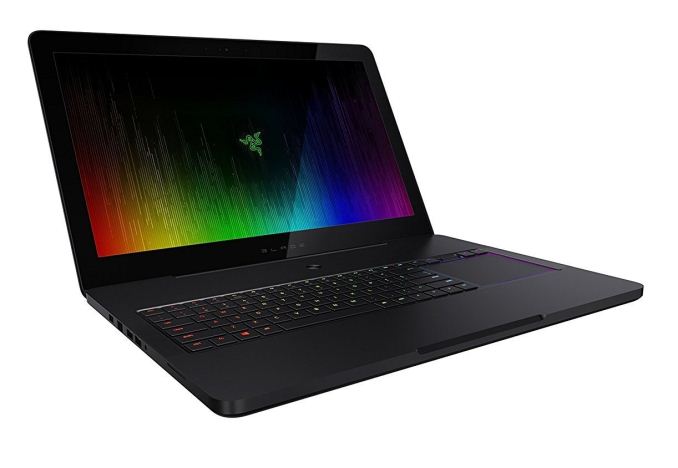
Our second Razer branded gaming laptop comes in the form the of the Razer Blade Pro. The Pro offers two models with either a 1080p or a 4K display, but the 1080p model is for all intents and purposes the 14-inch Razer Blade in a larger form factor. The 4K model, by comparison, features a GeForce GTX 1080, making the more powerful model by far.
The 4K model features an IGZO capacitive multi-touch panel, uses NVIDIA G-SYNC, offers 100% Adobe RGB color reproduction (no sRGB), and is a THX certified mobile device. Pushing the pixels on the 4K Pro is a single GTX 1080 8GB. The CPU running the show us the higher clocks i7-7820KH running at 2.9 GHz, 3. 9 GHz, or 4.3 GHz (Base/Turbo/Overclock). RAM capacity sits at 32GB of dual-channel DDR4 2667. This particular option includes the base storage configuration of 2x 256GB PCIe M.2 drives with options of going up to 2TB, also in RAID 0 form (2x 1TB drives).
The black chassis of the Blade Pro is made from CNC machined aluminum and follows the Razer design to a T, but larger. This makes it one of the thinnest and lightest GTX 1080 laptops around . The Pro uses a mechanical keyboard and RGB LED keys controlled by the Razer Synapse software. The trackpad is located to the right of the keyboard which can take some getting used to. The price is currently at $3999 and is quite expensive comparatively.
Desktop Replacement Gaming Laptops
Mythlogic Phobos 8717
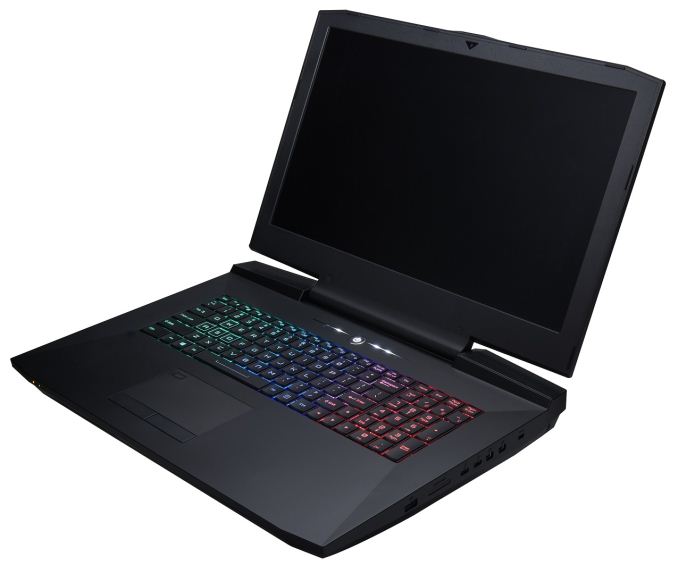
At the top of the gaming laptop pantheon are full-size “luggable” desktop replacement laptops. While these are still laptops in the strictest sense, they are essentially made to be portable desktops rather than lap computers or even a machine meant to be used away from mains power for an extended period of time. This allows them to use component choices you couldn’t do in proper laptops, improving performance at the cost of weight.
Our first entry in the ultimate gaming laptop category comes from Mythlogic with their Phobos 8717. Making full use of the space afforded by a “luggable” design, the Phobos incorporates a full size desktop Kaby Lake processor. Options range from an i5-7600K (4.1 GHz), a locked i7-7700 (4.2 GHz), to the i7-7700K running at 4.5 GHz. Up to 64GB of memory is supported at speeds up to DDR4 3000 MHz using the four SO-DIMM slots. All models use 17.3-inch AHVA LCDs, with the base model using a 2560×1440 panel while higher-end models incorporate a full 4K display with G-SYNC support. The Phobos 8717 is also able to output three external monitors up to 4K through its HDMI and 2x DisplayPorts.
Similar to the CPU options, the video card options are equally oversized, ranging from a single GeForce GTX 1070 6GB up to dual, desktop class GTX 1080s in SLI. Storage options include two M.2 SSDs in either SATA or PCIe mode, as well as additional space for two changeable 2.5″ HDD/SSD using the SATA interface.
In terms of design, the Phobos sports a black chassis with a couple of design LED elements on the lid; otherwise, it is a fairly plain chassis with average build quality. The keyboard is full-size and color illuminated with a numeric pad offset just to the right. One of the biggest points to draw users to the Mythologic gaming laptops are the price to performance ratio. At $2335 base price with a desktop class quad core and GTX 1070, it may be tough to beat.
MSI GT83VR Titan SLI-212
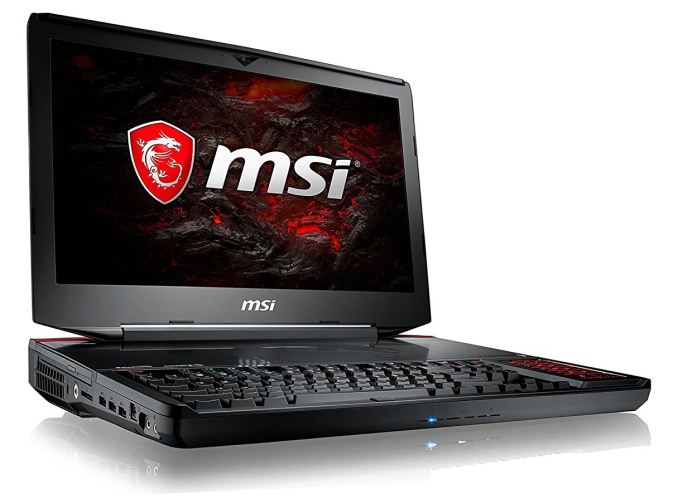
Our final (and by far most expensive) laptop in this guide is MSI’s GT83VR Titan SLI. This “luggable” in two flavors, SLI-212 and SLI-252. The difference between them lay in the amount of RAM as well as the storage setup, with the SLI-212 being on the higher end of the two.
The 212 comes with a 7th Generation Core i7-7920HQ CPU running at 3.1/4.1 GHz (Turbo/Base) with a TDP of 45W. The laptop comes with 64GB DDR4-2400 RAM (the 252 is 16GB) which should be plenty for even the most memory intensive tasks. The storage configuration consists of two 512GB PCIe SSDs plus a 1TB 7200 RPM HDD. The display is a very large 18.4″ IPS panel at 1920×1080. Atypically, there is not a 4K option despite a pair of powerful GeForce GTX 1080s in SLI under the hood.
Meanwhile the black colored chassis is constructed from CNC machined aluminum. The lid has two dart type lighted lines along with the MSI Gaming Dragon symbol in the middle to give it a little pizazz. The rear has large exhaust vents with red aluminum trim. Many will take one look and immediately think its a gaming laptop. Last but not least, the keyboard is a ‘real’ Cherry MX Silver keyboard with multi-backlit steel series KB 88 keys. The GT83VR is rather large, measuring 16.85″ x 12.36″ x 1.66/2.52″ and weighs in at a hefty 13.13 lbs and known to have good build quality.

